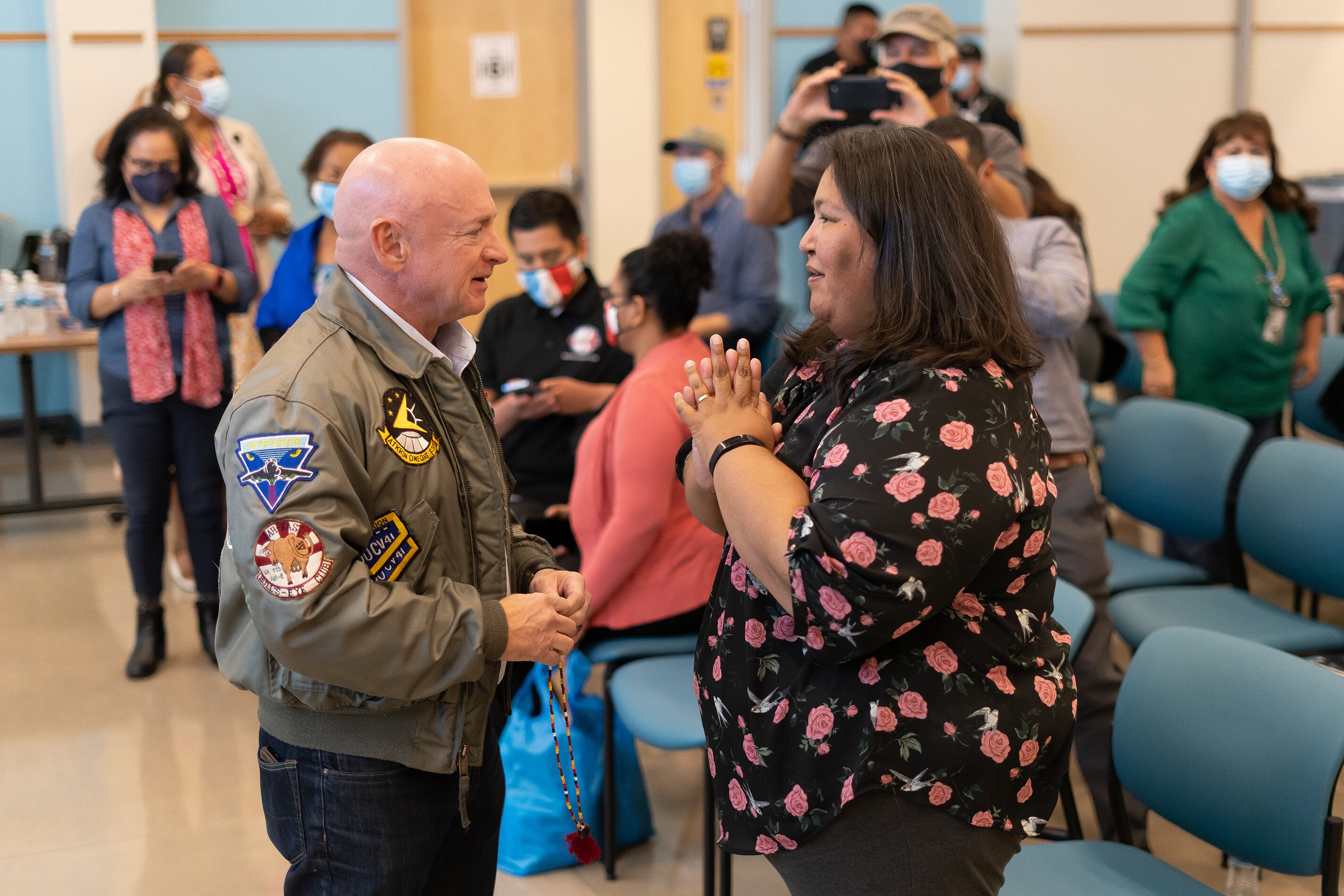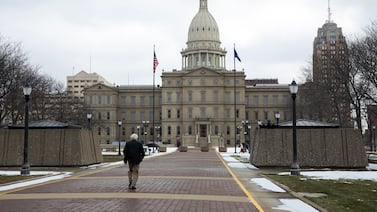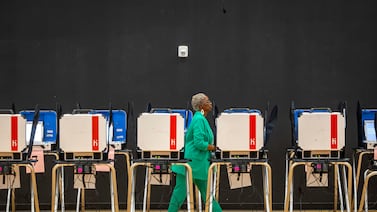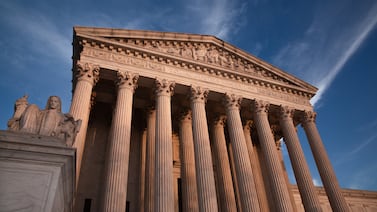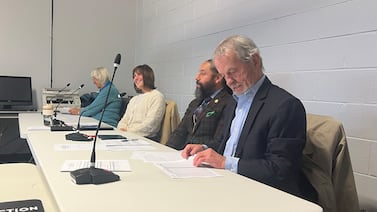Votebeat is a nonprofit news organization reporting on voting access and election administration across the U.S. Sign up for Votebeat’s free national newsletter here.
Pima County voters won’t have to worry about fire sprinklers inadvertently drenching their ballots once the Recorder’s Office and Elections Department move into a new headquarters building next year.
It’s never happened, but in the current space, workers cover the ballots with tarps every night, just in case. The new offices will have a waterless fire retardant, one of many welcome upgrades, Pima County Recorder Gabriella Cázares-Kelly said.
“It’s a really big deal,” Cázares-Kelly said oft the overall move and what it means for voters.
It means moving from a space that could not fully accommodate the needs of the Recorder’s Office to one that will consolidate its operations and provide more space for working, training, and storage, allowing more time to serve the voters, the recorder said.
“If we’re not having to drive to multiple locations just to access our equipment, that means more people on our phones, more people training,” she said.
Recorder’s Office and Elections Department stay together
The push for a move to new offices began before Cázares-Kelly took office in 2021. She said the move could happen as soon as May. The new offices will be in a county-owned building located in the southern edge of Tucson that the federal government previously used to process asylum seekers.
The move will keep the consolidated Recorder’s Office in the same building as the Elections Department. An earlier plan would have separated them, which Elections Director Constance Hargrove said would have been a problem, because workers would’ve had to wheel the ballots from one building to another, making them less secure.
“I think the takeaway is the chain of custody, security of the ballots, is our primary concern,” said Hargrove. “And so having the recorder and elections in the same building is a benefit to the county and to the public.”
The Recorder’s Office is still working with architects to design the new space.
Spokesperson Michael Truelsen said the office doesn’t yet have a cost estimate for the planned renovation and move.
‘So much in this tiny space’
The Recorder’s Office now occupies three separate office spaces in Tucson. The office currently designated for elections work is 7,000 square feet. That’s the equivalent of 1½ basketball courts, but it has handled massive volumes for Arizona’s second most populous county. The workers there scanned envelopes, and verified signatures for 518,416 ballots during the 2024 presidential election.
Cázares-Kelly recalls being puzzled at first when a Tucson city clerk and her staff toured the space and told her they were impressed.
“And I said, ‘Really?’ because that’s not usually the reaction that people have,” Cázares-Kelly said. “And they said, ‘We’re so impressed that you’ve been able to do so much in this tiny space.’”
One problem has been storage space for non-electronic equipment such as signage and sign holders. Cázares-Kelly said those items are currently stored in locations around the county and must be rounded up, cleaned, and delivered to polling places every election. (Pima County has had four elections this year).
That won’t be the case with the new office, which has twice as much space for election work.
That will include a designated training room, more meeting space, larger break rooms, a lactation room, a backup generator, and an observation area for the public and media.
The design also has the voter in mind.
“We are specifically designing the space with the idea that voters will come and drop off their ballots in person, and we will have ballot drop boxes located that are accessible, 24/7, at that facility,” Cázares-Kelly said, adding that it will be helpful to have it on the south side of Tucson, near a high-volume shopping plaza.
Hargrove said the Elections Department has not been crunched for space, but will appreciate a larger break room and a training room in the new space. And she noted that visitors in the observation area will be able to see the operations of the recorder and ballot counting at the same time, which is not the case now.
Contact Votebeat at az.tips@votebeat.org.

